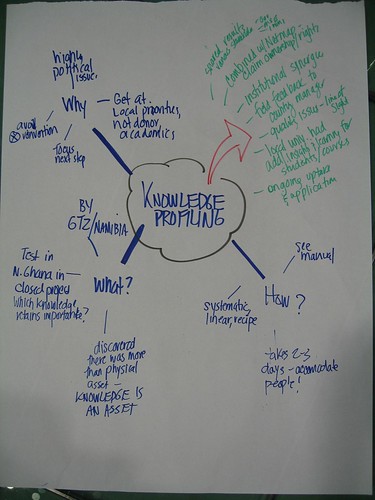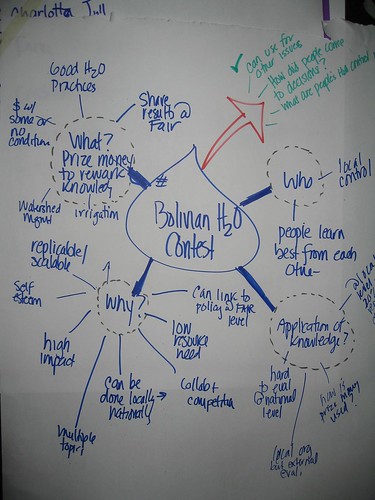We will start with those who helped us with the logistics: from set up of the Atrium to the set up of the bar and from making all computers have internet to ensuring that each room had flip charts and projectors! A big thank you to all of you!
Aida Luberto (FAO), Alain Savary (FAO), Alessandro Pastori (FAO), Alexis Crespel (FAO), AnnaPaola DeSantis (FAO), Arslen Bounemra (FAO), Brigitte Bellemare (FAO), Carlo Crescitelli (FAO), Diane Calderbank (FAO), Dominique Burgeon (FAO), Elio Bargigli (FAO), Erwin Northoff (FAO), Fabio Lotti (FAO), FAO Staff Coop (FAO), Fernando Servan (FAO), Fiammetta Piperno (FAO), Fulvio Delli (FAO), GianFortunato Cangemi (FAO), Ingrid Alldritt (FAO), Johnny Hua (FAO), Leone Corazza (FAO), Livia Cellini (FAO), Luca Lodovichi (FAO), Luisa Guarneri (FAO), Marco Evangelistella (FAO), Marco House (FAO), Margaret Zito (FAO), Maria Barroso (FAO), MarieJose Piredda (FAO), Mario Alessandri (FAO), Massimiliano Bruzziches (FAO), Massimo Albanesi (FAO), Maurizio Cerrai (FAO), Mauro Caponetti (FAO), Michele Setaro (FAO), Ornella Loniti (FAO), Paul Anthem (FAO), Pauline Farrugia (FAO), Pierre Abramovici (FAO), Pierre Fournier (FAO), Piervito Muscaridola (FAO), Pietro Trecca (FAO), Rafael Rodriguez (FAO), Rebeca Andarias (FAO), Regina Gambino (FAO), Roberto Altomare (FAO), Roberto Bonafede (FAO), Scott Grove (FAO), Security Services (FAO), Sergio Ferraro (FAO), Sergio Perciballi (FAO), Sharon Lee Cowan (FAO), Silvana Leonardi (FAO), Simplice Ngathe (FAO), Stefano Scategni (FAO), Stephen Dembner (FAO), Stephen Dowd (FAO), Theresa Panuccio (FAO), Vincenzo Marciano (FAO)Event such as this one needs support through out the days (and days leading up to it) to ensure that everything runs smoothly. At this point, the organizers can't be everywhere! We had great support from all the volunteers who took time out to help participants and ensure that everyone had a smooth sail! A big thanks to all of you!
Alberto Antonini (FAO), Alessandro Falasca (FAO), Angela Mancinelli (FAO), Angelica Abrina (FAO), Anna Maria Walter (FAO), Carole McCutcheon (FAO), Christiane Monsieur (FAO), Cinzia Noce (FAO), David Evans (FAO), David Lanzi (FAO), Domenica Baniak (FAO), Domenica Scola (FAO), Dyaa Ajkabache (FAO), Fabiola Franco (FAO), Francesca Launaro (FAO), Francisco del Pozo (FAO), Rosana Frattini (FAO), Gudrun Johannsen (FAO), Imma Subirats (FAO), Jane Russel (FAO), Jasmina Tisovic (FAO), Julia Matthews (FAO), Kirsten Geist (FAO), Kristin Kolshus (FAO), Laura Madrignani (FAO), Lisa Cespedes (FAO), Laura Rinnovati (FAO), Luciana Ianiri (FAO), Marco Danzi (FAO), Maria Folch (FAO), Marta Antonelli (FAO), Marta Iglesias (FAO), Mary Redahan (FAO), Massimiliano Fani (FAO), Massimiliano Martino (FAO), Monica Nutile (FAO), Montse Barba (FAO), Nicholas Waltham (FAO), Peter Bruggeling (FAO), Pilar Cabestany (FAO), Roberta Nettuno (FAO), Stefania Maurelli (FAO), Stefano Anibaldi (FAO), Stefano Pesci (FAO), Stefano Suozzo (FAO), Cristina Torquati (FAO), Tullia Baldassarri (FAO), Valentina Delle Fratte (FAO), Virginie Viollier (FAO), Vittoria Gliddon Ercolani (FAO)Then there were the facilitators who made sure that the 112 sessions started in time, ended in time and of course during the session there was great discussion, sharing and learning! Thank you!
Andrea Pape-Christiansen (ICARDA), Anna Maria Walter (FAO), Anne Aubert (FAO), Antonella Pastore (CGIAR ICT-KM Program), Christiane Monsieur (FAO), Cristina Sette (ILAC), Eduardo Marinho (WFP), Françoise Trine (FAO), Geoff Parcell (Consultant), Gunila Olsson (IFAD), Günther Hemrich (FAO), Hugo Besemer (Consultant), Jean Balie (FAO), Johannes Keizer (FAO), John Preissing (FAO), Kristin Kolshus (FAO), Laura Madrignani (FAO), Luca Servo (FAO), Lucie Lamoureux (Consultant), Mami Wada (FAO), Manuel Flury (SDC), Marco Boscolo (FAO), Marco Piazza (FAO), Maria Grazia Bovo (FAO), Meenalosany Arivananthan (World Fish), Michael Riggs (FAO), Nadejda Loumbeva (FAO), Nadia Manning-Thomas (IWMI), Nancy White (Full Circle), Nick Waltham (FAO), Peter Ballantyne (IAALD), Peter Casier (WFP), Petr Kosina (CIMMYT), Pier Andrea Pirani (Euforic), Rasha Omar (IFAD), Riff Fullan (Helvetas), Romolo Tassone (FAO), Roxanna Samii (IFAD), Simone Staiger-Rivas (CIAT), Sophie Treinen (FAO), Stefka Kaloyanova (FAO), Stephen Katz (FAO), Stephen Rudgard (FAO), Valeria Pesce (GFAR), Yves Klompenhouwer (FAO)Last but not least, the steering committee, who tried their very best in the last 10 months to ensure that the Fair would be a great learning and fun event! It was a pleasure working with all of you!
Andrew Nadeau (FAO), Ekram El-Huni (WFP), Elena Di Paola (FAO), Enrica Porcari (CGIAR), Gauri Salokhe (FAO), Jim Garber (FAO), Johannes Keizer (FAO), Nadejda Loumbeva (FAO), Patti Sands (Bioversity International), Ramin Rafirasme (WFP), Roxanna Samii (IFAD), Sophie Treinen (FAO), Stephen Rudgard (FAO), Stephen Katz (FAO), Willem Bettink (IFAD)If we forgot anyone’s name, our apologies and a thank you!














